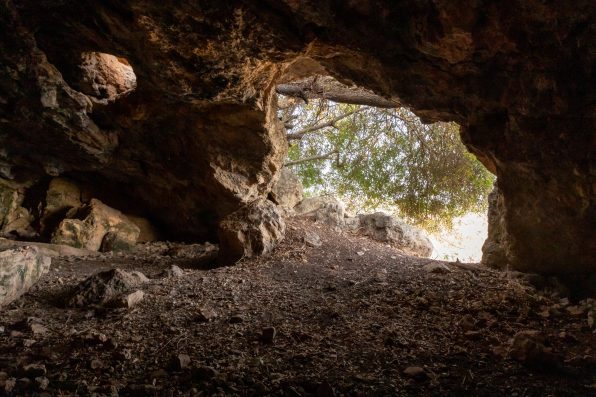Archaeologists In Northern Israel Recently Discovered Evidence Of The Earliest Use Of Vegan Dye, Which Was Created Over 15,000 Years Ago

At Kebara Cave in northern Israel, archaeologists have found evidence of the earliest use of vegan dye. The bright red dye discovered in the cave was made from the roots of a plant called Rubiaceae over 15,000 years ago.
In some areas, the plant is known as woodruff or madder. It grows throughout Europe and Asia and features small white blossoms.
The plant-based pigment was used to dye ten beads made out of shells. The beads were unearthed in an excavation that took place in Israel in 1931.
Hunter-gatherers who were associated with the early Natufian culture were the first people to figure out that a bright red dye could be created from a plant with white flowers. The beads found at Kebara stood out from all the other Natufian beads in that they were much more vibrant in color.
The Natufians lived around 15,000 to 11,500 years ago. They supported a sedentary population even before the introduction of agriculture. They did not have any domestic crops or animals except for dogs. Evidence of their sedentism includes the fact they had mice in their homes and the presence of animal remains from all seasons.
Before the discovery of the bright red dye derived from Rubiaceae, the earliest-known plant dye dated back to 6,000 years ago.
Furthermore, plants from the Rubia family are not edible. Therefore, their use reveals previously unknown information about the Natufian society.
Laurent Davin, a researcher at Hebrew University, noted that the plants had antioxidant properties, so the Natufians must have used them for medicinal purposes. In fact, the plants are still used in traditional medicine to this day as an aphrodisiac. After some experimentation, the Natufians eventually realized that the roots could serve as a colorful dye.
According to Davin, the red on the beads “looks nearly like blood.” At other Natufian sites, beads of this nature were absent, which indicated that it could’ve been a local practice or they were artifacts that were heavily guarded due to their impressive, bold hue.

svarshik – stock.adobe.com – illustrative purposes only
Red is a color of dominance and aggression, making it attractive to potential mates. So, it may explain why prehistoric people preferred using shades of red to decorate their bodies and possessions.
If true crime defines your free time, this is for you: join Chip Chick’s True Crime Tribe
Here Are The Three Easiest Ways To Remove Your Outdated Wallpaper To Give Your Walls A Fresh Look
Sign up for Chip Chick’s newsletter and get stories like this delivered to your inbox.
More About:News